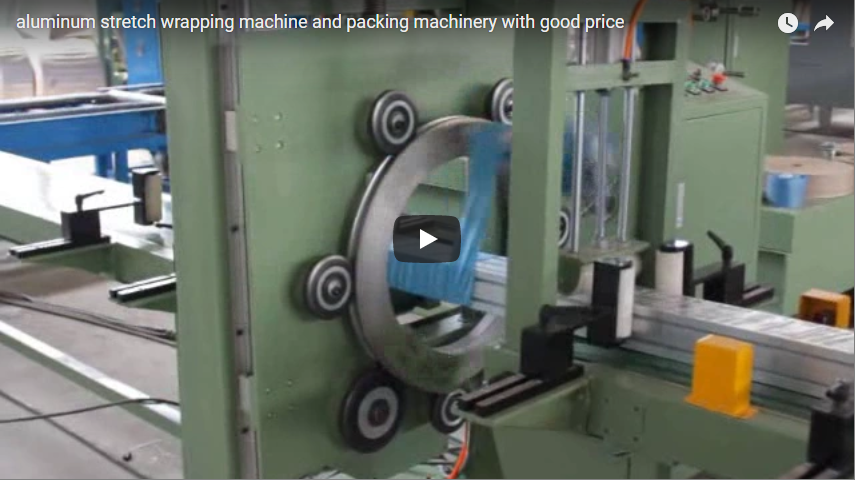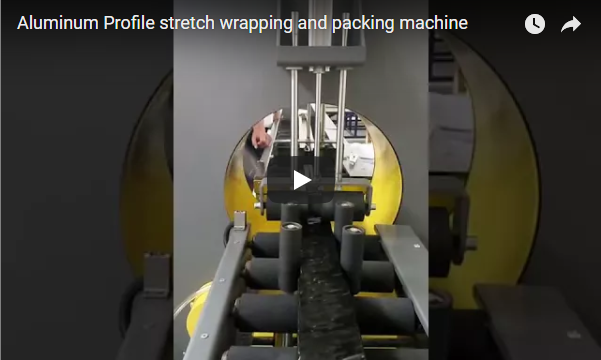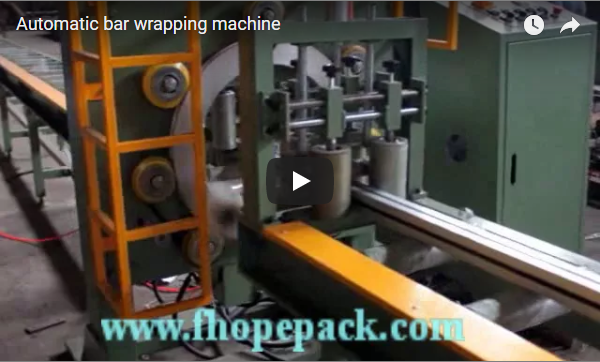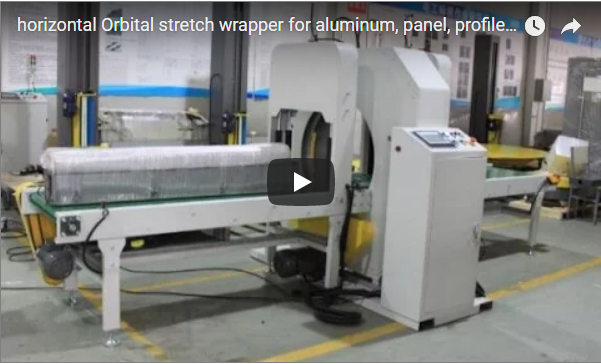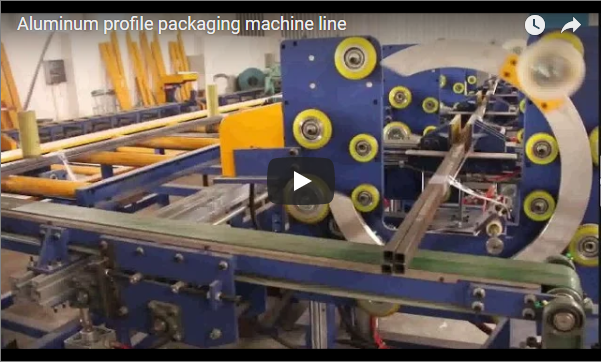Optimizing Protective Packaging: A Technical Look at Shrink Wrapping and Board Packing for Aluminum Profiles
Aluminum profiles, essential components in construction, automotive, and industrial applications, require robust packaging solutions to prevent damage during handling, transit, and storage. Their length, varied shapes, and susceptibility to scratches and bending present unique packaging challenges. This article explores two common automated methods: shrink wrapping and board packing, detailing their processes, technical considerations, and best practices.
1. Understanding the Packaging Challenges for Aluminum Profiles
Effective packaging must address several key vulnerabilities:
- Surface Damage: Scratches, abrasions, and dents can compromise the aesthetic and functional integrity of profiles.
- Bending and Deformation: Long extrusions are prone to bending if not adequately supported.
- Corrosion: Exposure to moisture and environmental factors can lead to oxidation, especially on unfinished aluminum.
- Handling Difficulties: Bundling profiles simplifies handling, loading, and inventory management.
Automated packaging systems provide consistent protection and improve operational efficiency compared to manual methods.
2. Shrink Wrapping Solutions for Aluminum Profiles
Shrink wrapping involves enveloping profiles or bundles in a polymer film, which then shrinks tightly around the product when heat is applied.
2.1 Process Overview
- Infeed: Profiles are fed onto the machine's conveyor system, often grouped into bundles.
- Film Application: A curtain or tube of thermoplastic film (commonly Polyethylene - PE) is draped or formed around the profiles.
- Sealing: Sealing bars (side seal, L-bar, or continuous motion) create a sealed bag around the product.
- Heat Application: The wrapped product passes through a heat tunnel where controlled hot air circulation causes the film to shrink uniformly, conforming tightly to the profile bundle.
- Cooling & Outfeed: The wrapped bundle cools, solidifying the film's tight fit, before exiting the machine.
2.2 Key Machine Features and Technical Specifications
- Sealing Technology: Options include hot knife, impulse wire, or continuous rotary seals, affecting speed and seal integrity.
- Heat Tunnel Design: Airflow patterns, temperature control precision, and tunnel dimensions are critical for uniform shrinking without overheating.
- Conveyor System: Speed synchronization, belt materials (mesh, rollers), and profile guides ensure smooth product flow.
- Film Specifications: Machine capability dictates usable film types (PE, polyolefin), maximum roll width, and thickness range (e.g., 40-120 microns).
- Automation Level: Can range from semi-automatic (manual loading/feeding) to fully automatic integrated lines.
- Typical Throughput: Varies greatly based on bundle size and machine configuration, often measured in packs per minute or linear meters per minute.
- Power Requirements: Significant energy consumption, particularly for the heat tunnel (e.g., 20-100 kW depending on size).
2.3 Benefits of Shrink Wrapping
- Provides good protection against dust, moisture, and surface scratches.
- Creates stable, unitized bundles for easier handling.
- Offers tamper evidence.
- Can be a cost-effective solution for high-volume applications.
2.4 Considerations
- Film selection (thickness, clarity, UV protection) is critical based on profile weight, handling requirements, and storage conditions.
- Energy consumption of the heat tunnel can be substantial.
- Requires proper ventilation and adherence to safety protocols around heating elements.
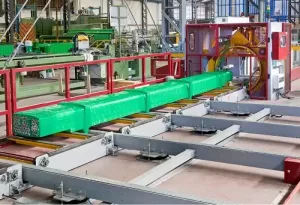
aluminum profile packaging lines 300x205 3. Board Packing Solutions for Aluminum Profiles
Board packing utilizes cardboard, fiberboard, or similar rigid materials to provide enhanced protection, particularly against impact and bending.
3.1 Process Overview
- Infeed: Profiles or bundles are conveyed into the packing station.
- Board Feeding & Forming: Flat sheets or pre-scored blanks of cardboard/fiberboard are automatically fed from a magazine. The machine may cut, score, or fold the board to create protective U-channels, edge protectors, or full enclosures.
- Application: The formed board elements are applied to the profiles (e.g., placed on top/bottom/sides).
- Securing (Optional): Depending on the system, the board may be secured using integrated strapping (plastic or steel), gluing, or interlocking folds. Sometimes board packing is used in conjunction with stretch or shrink wrapping.
- Outfeed: The protected profiles exit the system.
3.2 Key Machine Features and Technical Specifications
- Board Compatibility: Specifies usable materials (corrugated cardboard grades, solid fiberboard), maximum/minimum sheet size, and thickness.
- Forming Mechanism: Die-cutting, scoring wheels, folding plows determine the complexity of protective shapes achievable.
- Application Method: Robotic arms, mechanical pushers, or conveyor guides position the board accurately.
- Securing System Integration: Compatibility with strapping heads, glue applicators, or other methods.
- Changeover Time: How quickly the machine can adjust for different profile dimensions or board configurations.
- Operating Speed: Dependent on complexity, but often focused on cycles per minute.
3.3 Benefits of Board Packing
- Offers superior protection against impact, puncture, and bending compared to film alone.
- Provides stacking strength for warehousing.
- Utilizes potentially recyclable and renewable materials.
- Can be tailored for specific high-protection needs (e.g., sharp edges, heavy profiles).
3.4 Considerations
- Material costs for board can be higher than shrink film.
- Machine complexity and footprint may be greater.
- Throughput might be lower than some high-speed shrink systems, depending on the packing style.
- Dust generation from board cutting/handling may require management.
4. Integrating Packaging Solutions in the Production Line
Both shrink wrapping and board packing machines are often part of a larger automated line. Effective integration involves:
-
Conveyor Synchronization: Matching speeds between extrusion, cutting, stacking, packaging, and palletizing stages.
-
Handling Systems: Using appropriate conveyors (roller, belt), transfer devices, and buffering stations to manage profile flow without causing damage.
-
Control System Communication: Ensuring seamless communication and handshaking between different machines for coordinated operation (e.g., using PLC integration and protocols like Ethernet/IP or Profinet).
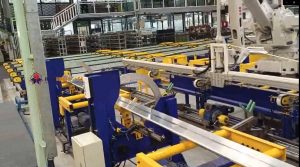
automatic aluminum profile bundling packaging line 5. Experience Sharing and Best Practices
-
Method Selection: Choose shrink wrap for basic protection and bundling; opt for board packing when impact resistance and rigidity are paramount. Combination systems (e.g., board edge protectors followed by shrink wrap) offer a balanced approach.
-
Material Quality: Consistently use high-quality film and board specified for the application and machine to avoid jams and ensure adequate protection. Film thickness and board grade directly impact performance.
-
Machine Maintenance: Regular preventative maintenance (cleaning sensors, checking sealing elements, lubricating moving parts, inspecting heat tunnel elements) is crucial for reliable operation and consistent package quality.
-
Operator Training: Well-trained operators understand machine settings, troubleshooting procedures, and safety protocols, minimizing downtime and ensuring optimal performance.
-
Bundle Configuration: Standardizing bundle sizes and configurations where possible simplifies machine setup and improves efficiency.
Conclusion
Selecting the appropriate packaging machinery for aluminum profiles is vital for maintaining product quality and optimizing logistics. Shrink wrapping offers efficient bundling and surface protection, while board packing provides enhanced physical defense against impacts and bending. Understanding the technical specifications, operational requirements, and integration possibilities of these systems allows manufacturers and fabricators to implement solutions that effectively protect their valuable aluminum products from the point of production to final installation.
For further information on related horizontal wrapping technologies:
https://www.fhopepack.com/Horizontal_wrapping_machine.html
info@fhopepack.com

